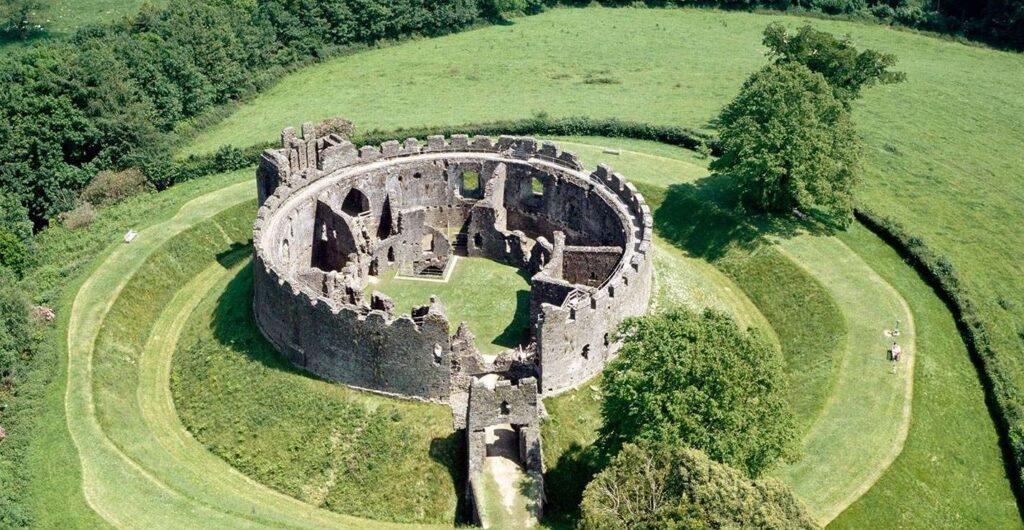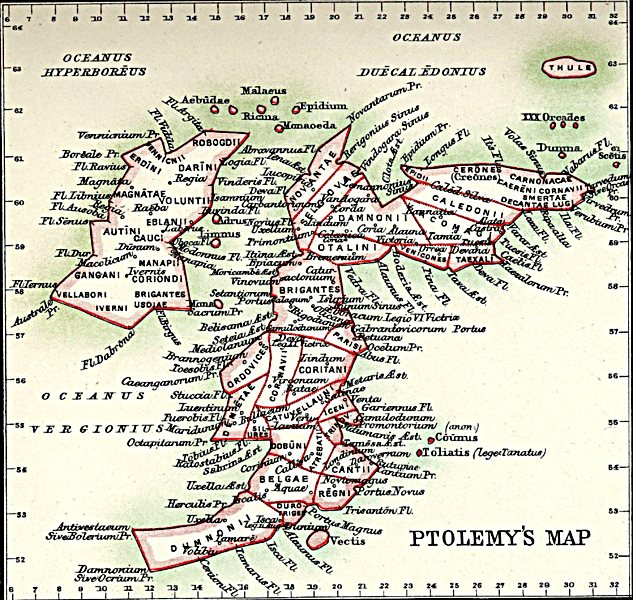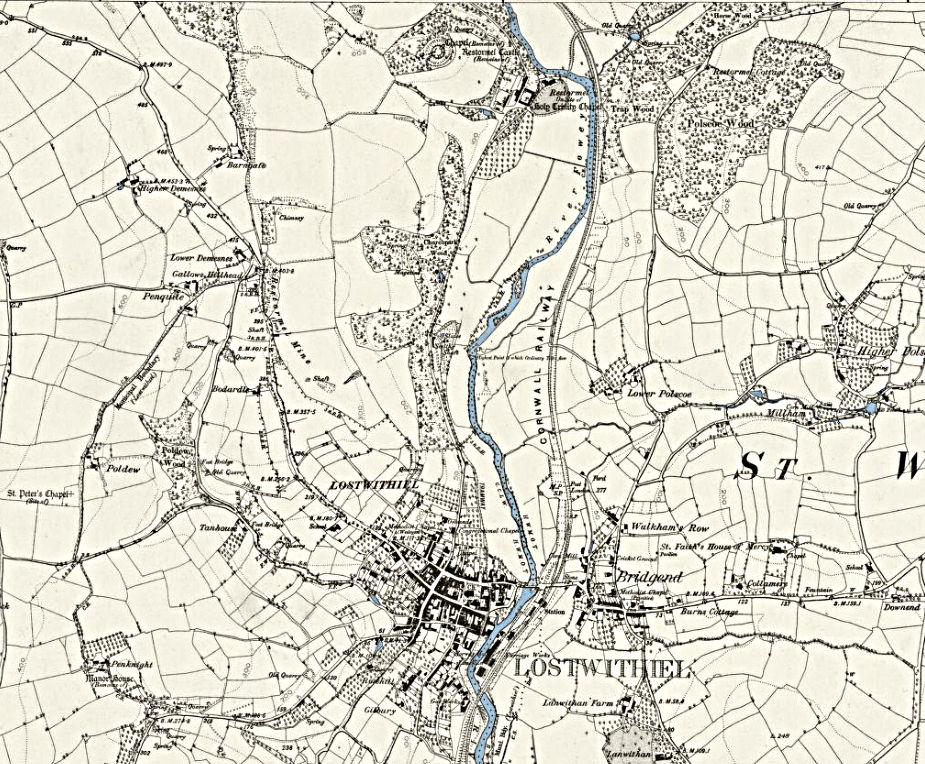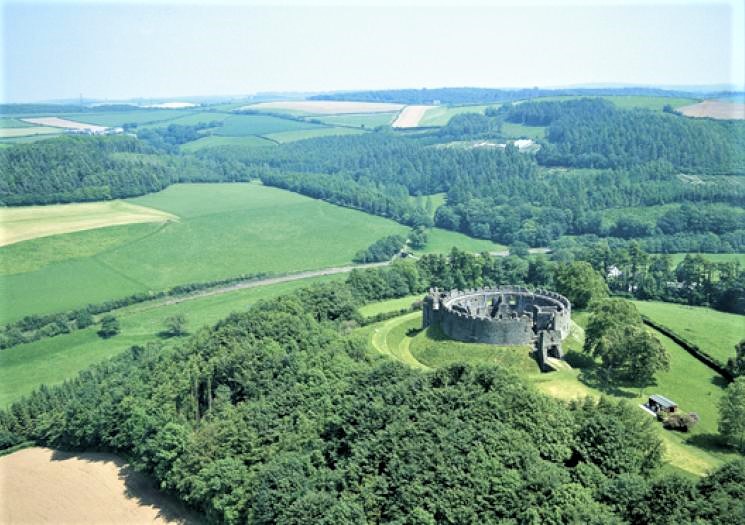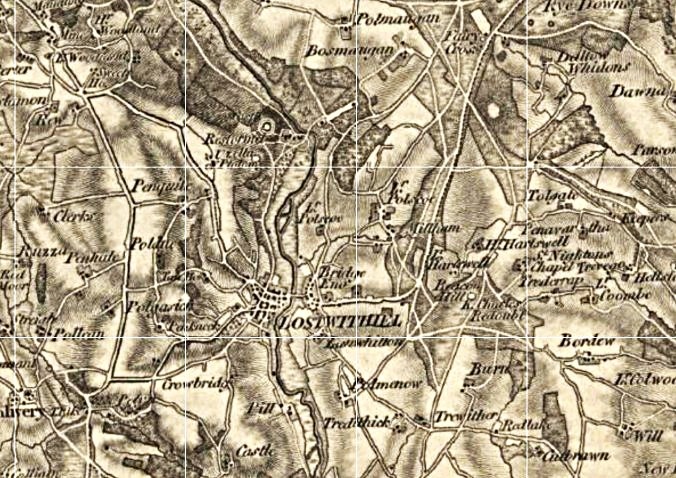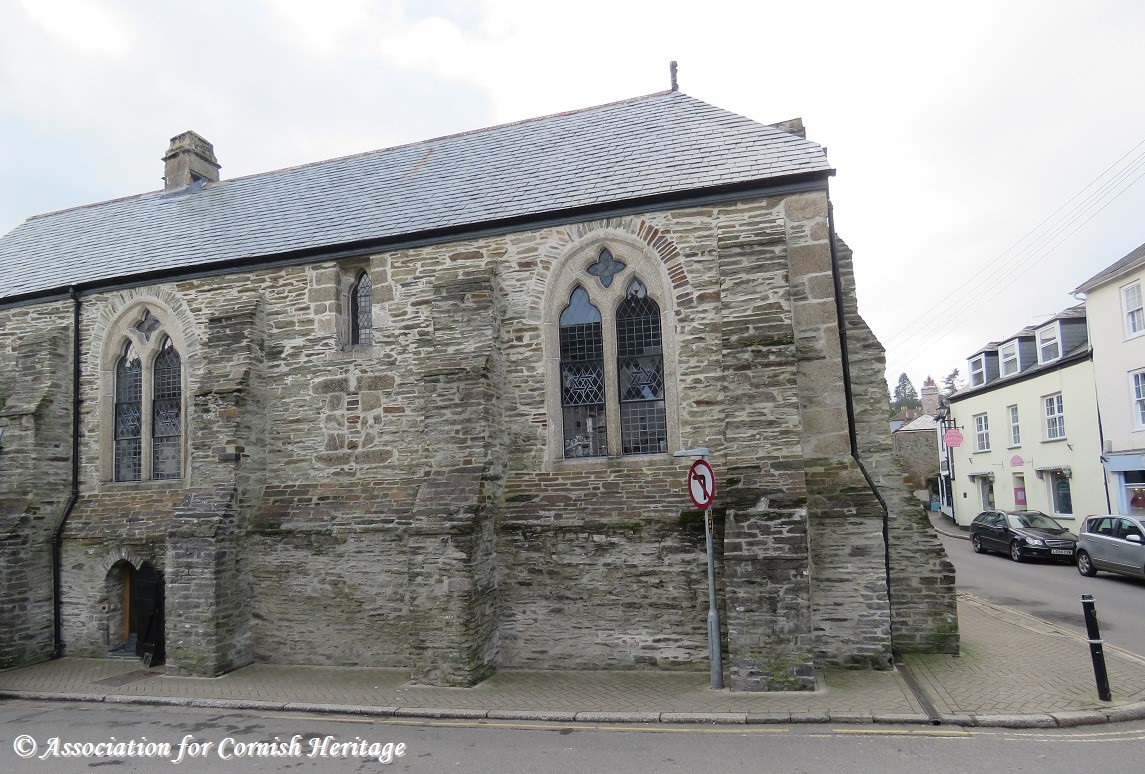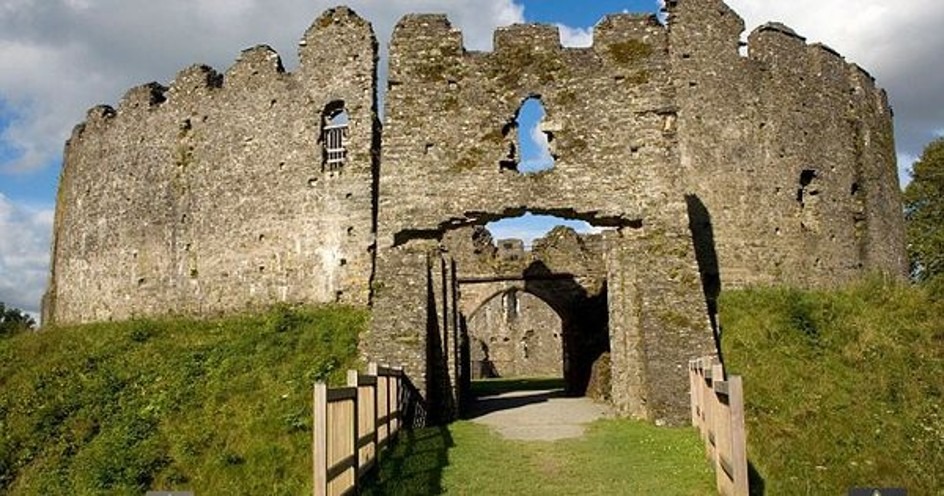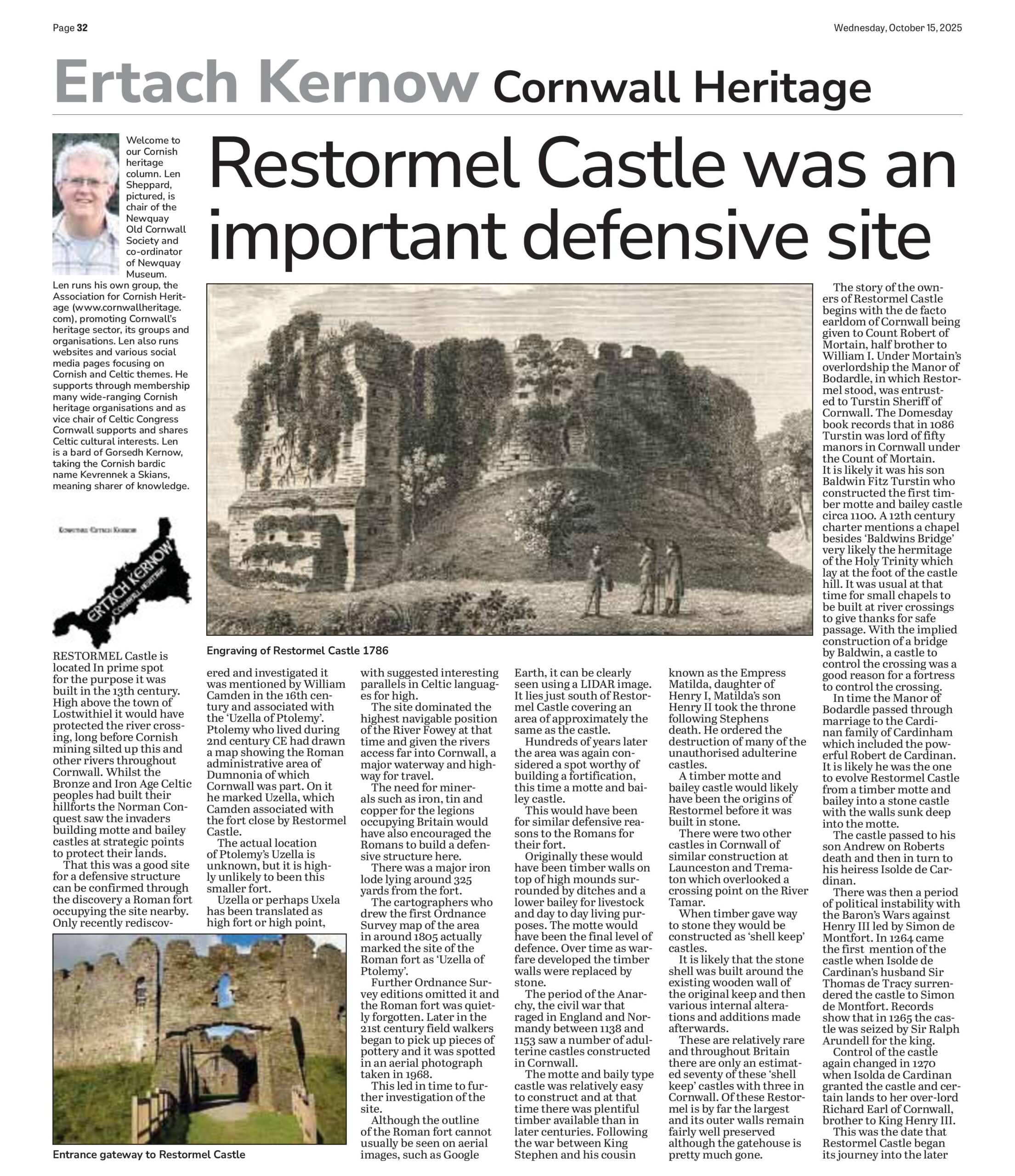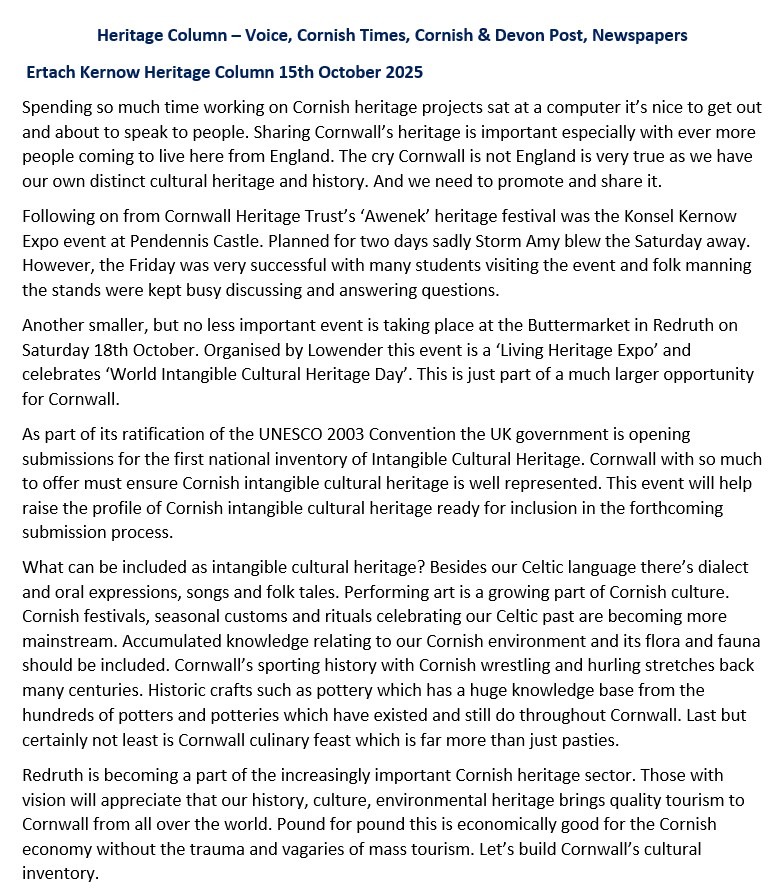Ertach Kernow - Restormel Castle an important defensive site
Restormel Castle is located In prime spot for the purpose it was built in the 13th century. High above the town of Lostwithiel it would have protected the river crossing, long before Cornish mining silted up this and other rivers throughout Cornwall. Whilst the Bronze and Iron Age Celtic peoples had built their hillforts the Norman Conquest saw the invaders building motte and bailey castles at strategic points to protect their lands.
That this was a good site for a defensive structure can be confirmed through the discovery a Roman fort occupying the site nearby. Only recently rediscovered and investigated it was mentioned by William Camden in the 16th century and associated with the ‘Uzella of Ptolemy’. Ptolemy who lived during 2nd century CE had drawn a map showing the Roman administrative area of Dumnonia of which Cornwall was part. On it he marked Uzella, which Camden associated with the fort close by Restormel Castle. The actual location of Ptolemy’s Uzella is unknown, but it is highly unlikely to been this smaller fort. Uzella or perhaps Uxela has been translated as high fort or high point, with suggested interesting parallels in Celtic languages for high.
Thank you for reading the online version of the Ertach Kernow weekly articles. These take some 12 hours each week to research, write and then upload to the website, and is unpaid. It would be most appreciated if you would take just a couple of minutes to complete the online survey marking five years of writing these weekly articles. Many thanks.
Click the link for survey: Ertach Kernow fifth anniversary survey link
As always click the images for larger view
The site dominated the highest navigable position of the River Fowey at that time and given the rivers access far into Cornwall, a major waterway and highway for travel. The need for minerals such as iron, tin and copper for the legions occupying Britain would have also encouraged the Romans to build a defensive structure here. There was a major iron lode lying around 325 yards from the fort. The cartographers who drew the first Ordnance Survey map of the area in around 1805 actually marked the site of the Roman fort as ‘Uzella of Ptolemy’. Further Ordnance Survey editions omitted it and the Roman fort was quietly forgotten. Later in the 21st century field walkers began to pick up pieces of pottery and it was spotted in an aerial photograph taken in 1968. This led in time to further investigation of the site. Although the outline of the Roman fort cannot usually be seen on aerial images, such as Google Earth, it can be clearly seen using a LIDAR image. It lies just south of Restormel Castle covering an area of approximately the same as the castle.
Hundreds of years later the area was again considered a spot worthy of building a fortification, this time a motte and bailey castle. This would have been for similar defensive reasons to the Romans for their fort. Originally these would have been timber walls on top of high mounds surrounded by ditches and a lower bailey for livestock and day to day living purposes. The motte would have been the final level of defence. Over time as warfare developed the timber walls were replaced by stone. The period of the Anarchy, the civil war that raged in England and Normandy between 1138 and 1153 saw a number of adulterine castles constructed in Cornwall. The motte and baily type castle was relatively easy to construct and at that time there was plentiful timber available than in later centuries. Following the war between King Stephen and his cousin known as the Empress Matilda, daughter of Henry I, Matilda’s son Henry II took the throne following Stephens death. He ordered the destruction of many of the unauthorised adulterine castles
A timber motte and bailey castle would likely have been the origins of Restormel before it was built in stone. There were two other castles in Cornwall of similar construction at Launceston and Trematon which overlooked a crossing point on the River Tamar. When timber gave way to stone they would be constructed as ‘shell keep’ castles. It is likely that the stone shell was built around the existing wooden wall of the original keep and then various internal alterations and additions made afterwards. These are relatively rare and throughout Britain there are only an estimated seventy of these ‘shell keep’ castles with three in Cornwall. Of these Restormel is by far the largest and its outer walls remain fairly well preserved although the gatehouse is pretty much gone.
The story of the owners of Restormel Castle begins with the de facto earldom of Cornwall being given to Count Robert of Mortain, half brother to William I. Under Mortain’s overlordship the Manor of Bodardle, in which Restormel stood, was entrusted to Turstin Sheriff of Cornwall. The Domesday book records that in 1086 Turstin was lord of fifty manors in Cornwall under the Count of Mortain. It is likely it was his son Baldwin Fitz Turstin who constructed the first timber motte and bailey castle circa 1100. A 12th century charter mentions a chapel besides ‘Baldwins Bridge’ very likely the hermitage of the Holy Trinity which lay at the foot of the castle hill. It was usual at that time for small chapels to be built at river crossings to give thanks for safe passage. With the implied construction of a bridge by Baldwin, a castle to control the crossing was a good reason for a fortress to control the crossing.
In time the Manor of Bodardle passed through marriage to the Cardinan family of Cardinham which included the powerful Robert de Cardinan. It is likely he was the one to evolve Restormel Castle from a timber motte and bailey into a stone castle with the walls sunk deep into the motte. The castle passed to his son Andrew on Roberts death and then in turn to his heiress Isolde de Cardinan. There was then a period of political instability with the Baron’s Wars against Henry III led by Simon de Montfort. In 1264 came the first mention of the castle when Isolde de Cardinan’s husband Sir Thomas de Tracy surrendered the castle to Simon de Montfort. Records show that in 1265 the castle was seized by Sir Ralph Arundell for the king. Control of the castle again changed in 1270 when Isolda de Cardinan granted the castle and certain lands to her over-lord Richard Earl of Cornwall, brother to King Henry III. This was the date that Restormel Castle began its journey into the later Duchy of Cornwall.
Richard would not live long enough to enjoy his new castle; fabulously wealthy he died in 1272 and was succeeded by his son Edmund. As earl of Cornwall Edmund was able to use his inherited wealth to begin the transformation of Restormel Castle. With his large landholdings in Cornwall and income from tin taxation he made Lostwithiel his capital in Cornwall, building what is now the Duchy Palace. With the transfer of his Cornish capital from Launceston to Lostwithiel Edmund began the transformation of Restormel into an impressive residence. There were some alterations to the external earthworks but little documentation remains telling of Edmunds work at Restormel. Following Edmunds death in 1300 the earldom reverted to the crown until the unfortunate appointment by Edward II of his favourite Piers Gaveston as earl of Cornwall between 1305 and 1312, when he was executed. The earldom was in abeyance for a period until John of Eltham became earl in 1328. The second son of Edward II and brother to the new king Edward III John’s life was short dying in 1336 at the age of twenty and having no real input into Restormel Castle.
The final phase of ownership took place in 1337 when Edward of Woodstock, best known to history as the Black Prince was made Duke of Cornwall. The earldom was gone and Cornwall had become a royal duchy. This would pass to the eldest surviving son of the monarch and the heir to the throne automatically with the crown retaining control when the was no son to inherit. With the transfer of power came many benefits accrued from the now extinct earldom, its wealth of land, property and including many castles including Restormel.
Edward the Black Prince as Duke of Cornwall visited Cornwall at least twice and stayed at Restormel, the most modernised of his Cornish castles. John of Eltham had appointed John de Kendall as keeper to maintain the castle and deer park; he continued in that job until 1354 when as an elderly man he was relieved of his deer park duties by Edward. Following the death of the Black Prince the castle remained unused gradually falling into disrepair. Henry VIII later turned the deer park into pasture. Antiquarian John Leland visiting in 1542 wrote of its ruination; ‘the timber rooted up, the conduit pipes takenaway, the roofe made sale of, the planchings rotten, the wals fallendown, and the hewed stones of the windowes, dournes, and clavels, pluct out to serve private buildings; onelythere remayneth an utter defacement, to complayne upon this unregarded distresse’. During the English Civil War the battle of Lostwithiel in 1644 saw Restormel Castle stormed and taken by Sir Richard Grenville for the king.
The ruined castle, still under ownership of the Duchy of Cornwall, was entrusted to the Office of Works in 1925 by Edward then Duke of Cornwall, later Edward VIII. Designated a scheduled monument it enjoys legal protection and is managed by English Heritage as a tourist attraction on behalf of the duchy. With around 2,000 of history as a defensive site and approaching 1,000 as a castle this is a location well worth visiting with wonderful views. A reminder that membership of Cornwall Heritage Trust allows entry into Restormel absolutely free along with other castles at Launceston, Tintagel, Pendennis, St Mawes and Chysauster Ancient Village. Fantastic value and supporting a superb Cornish heritage organisation.

